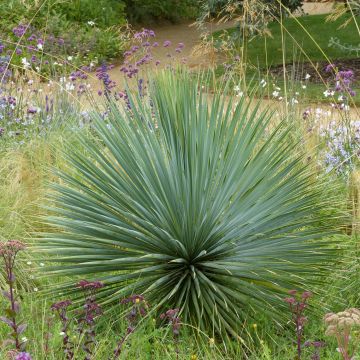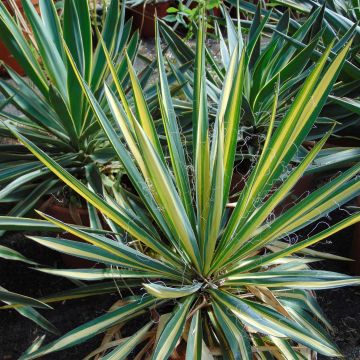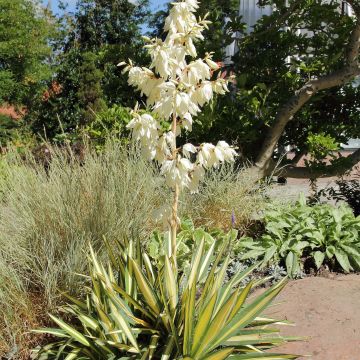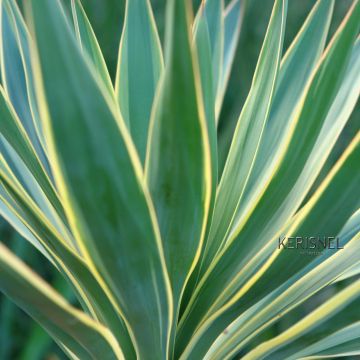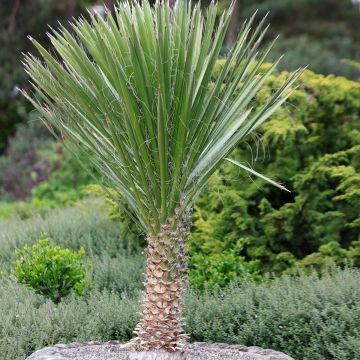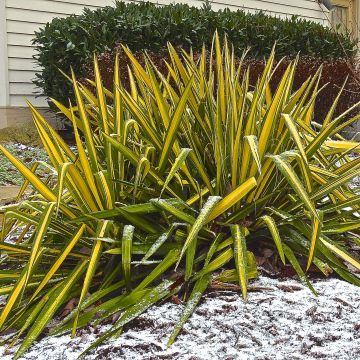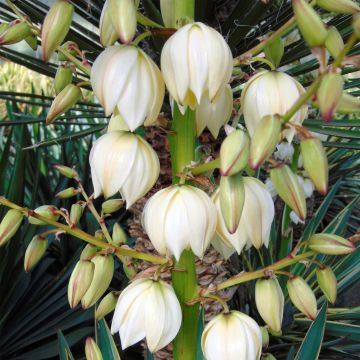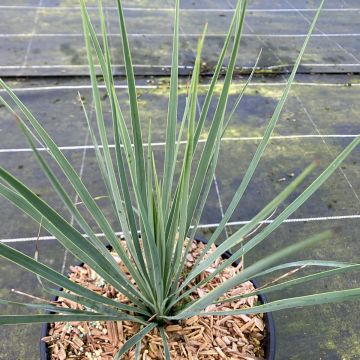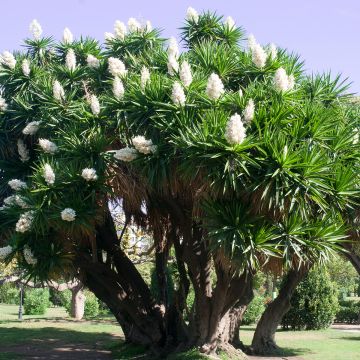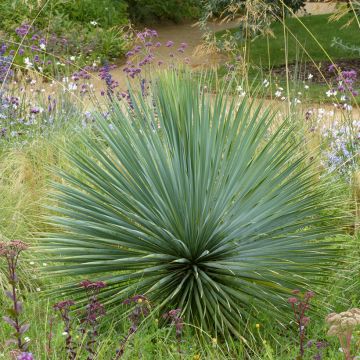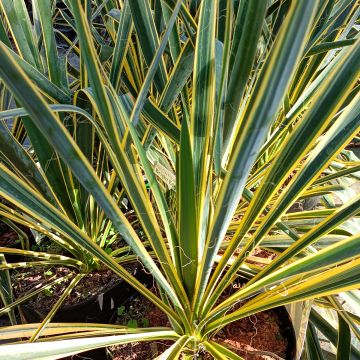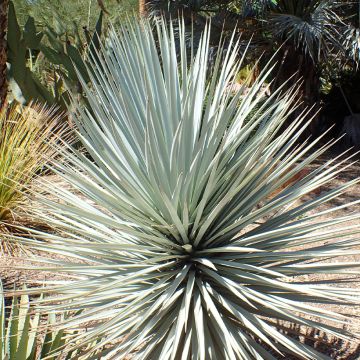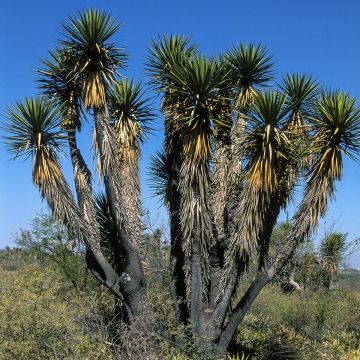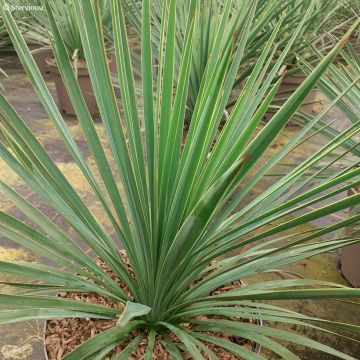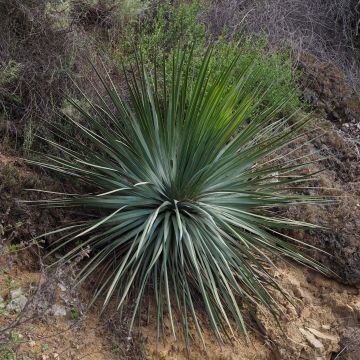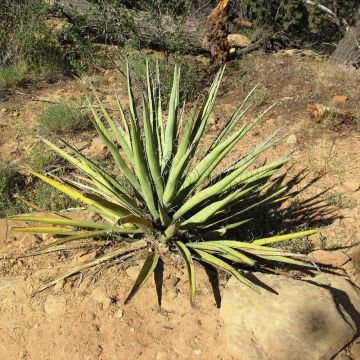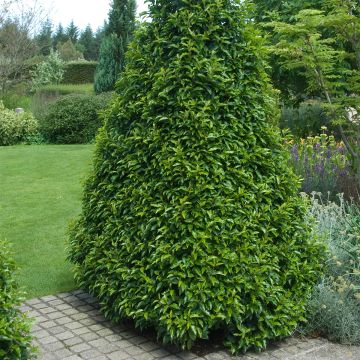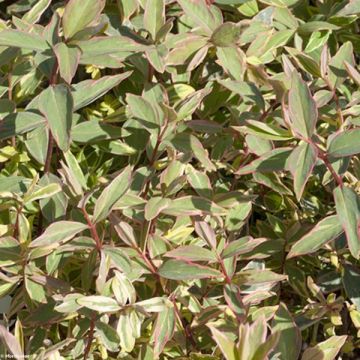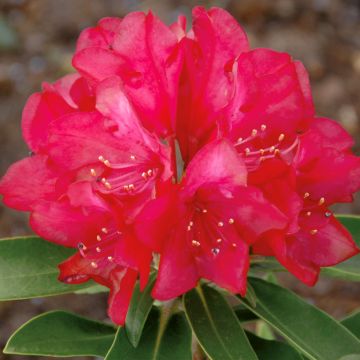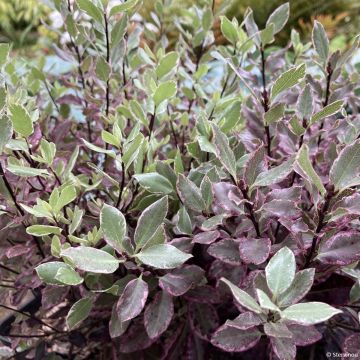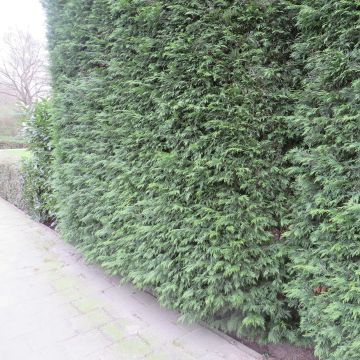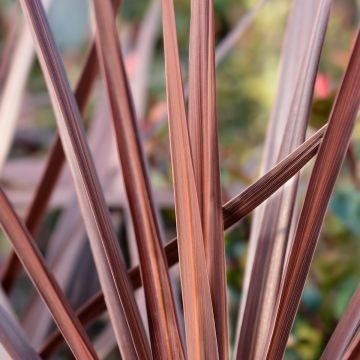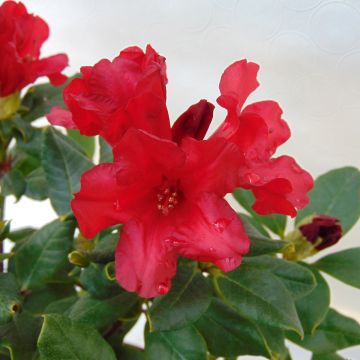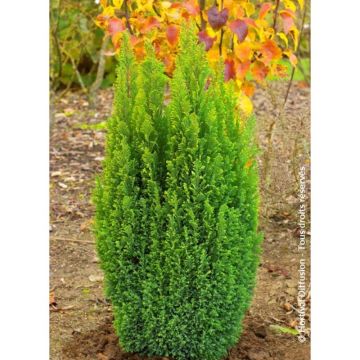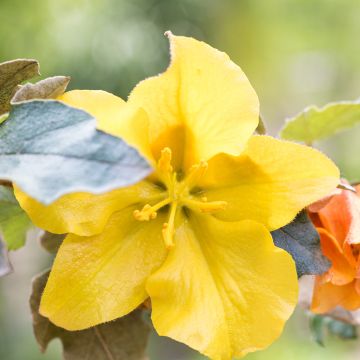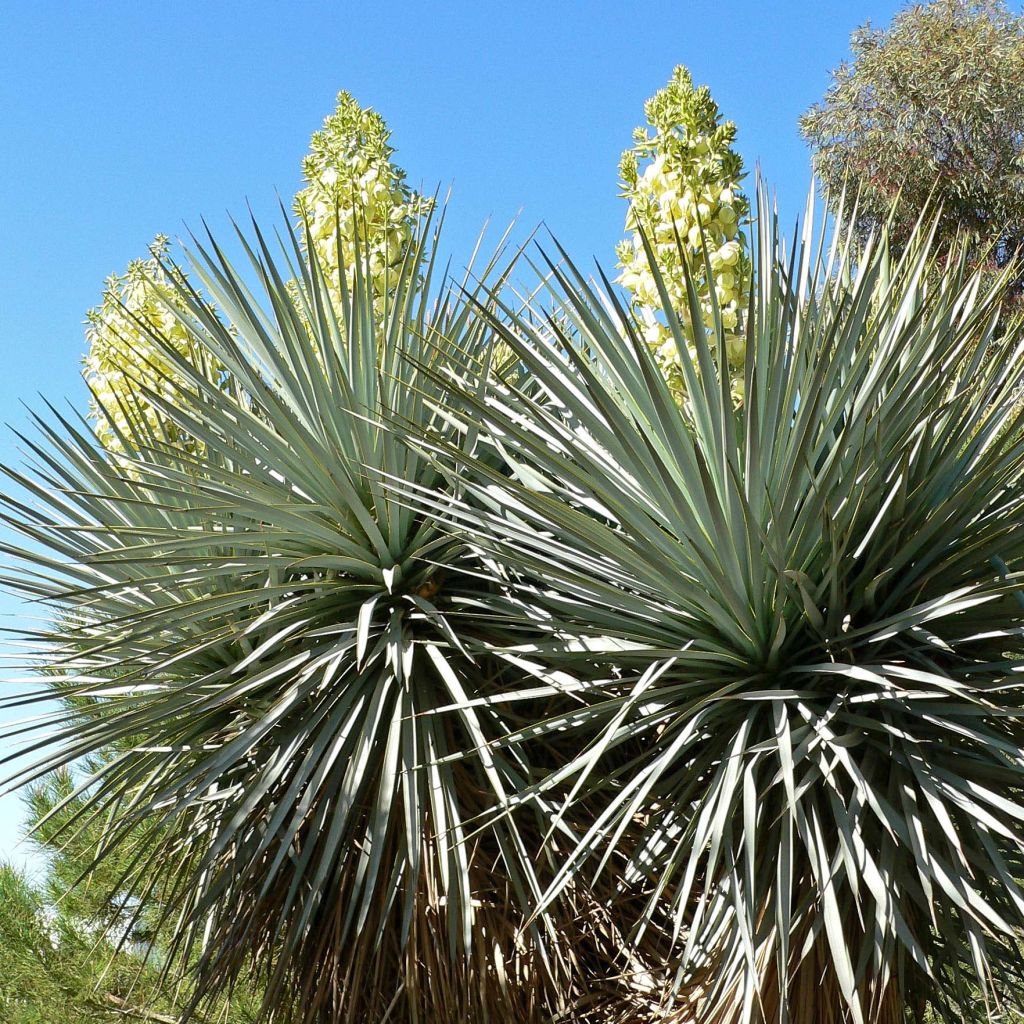

Yucca rigida - Yucca bleu
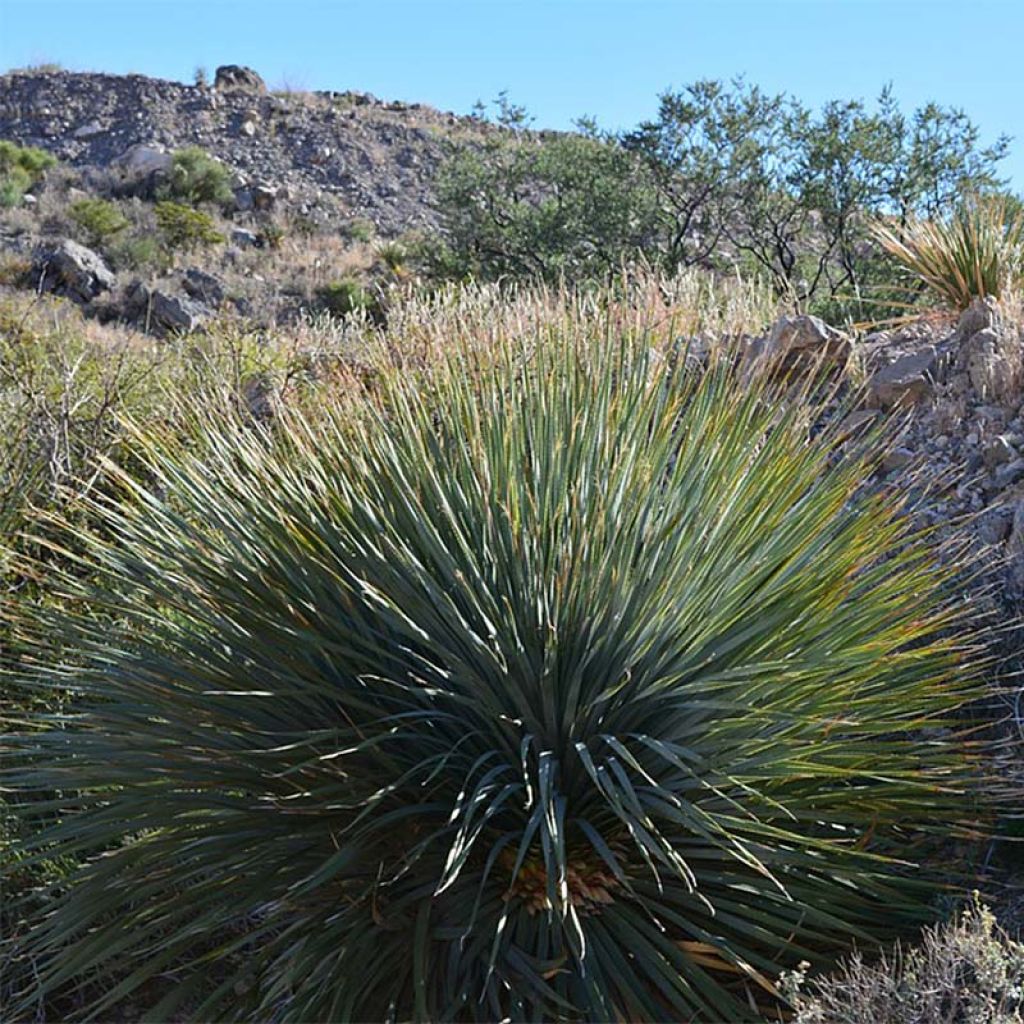

Yucca rigida - Yucca bleu
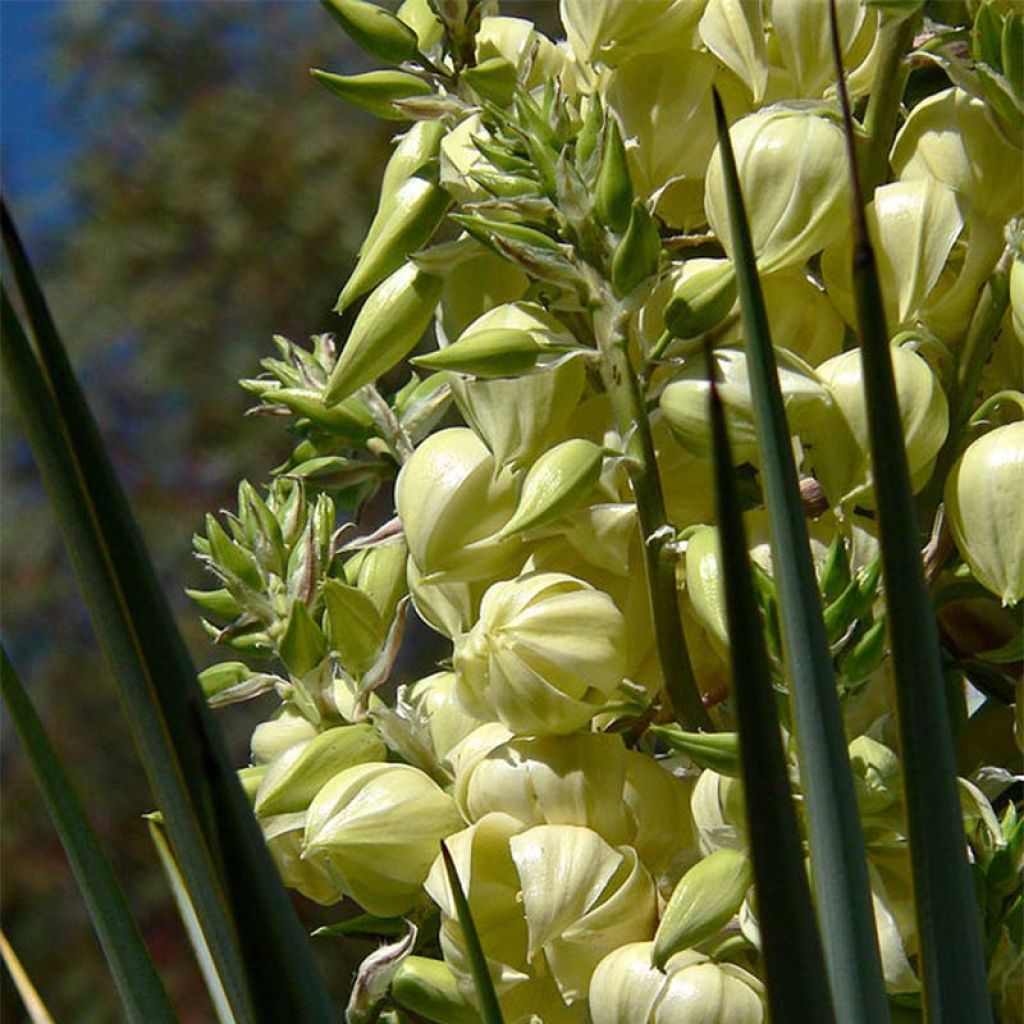

Yucca rigida - Yucca bleu
Yucca rigida
Yucca rigida
Mexican Blue Yucca, Blue Yucca
Fantastic Yucca, received very quickly, very well packaged, I would recommend shopping with you, thank you again.
Patrick Z., 07/04/2018
Why not try an alternative variety in stock?
View all →This plant carries a 24 months recovery warranty
More information
We guarantee the quality of our plants for a full growing cycle, and will replace at our expense any plant that fails to recover under normal climatic and planting conditions.
From €5.90 for pickup delivery and €6.90 for home delivery
Express home delivery from €8.90.

Does this plant fit my garden?
Set up your Plantfit profile →
Description
Yucca rigida, sometimes called Blue Yucca because of the colour of its foliage, is one of those extraordinary, remarkably ornamental plants from the North American desert areas, that we dream of adopting to bring an exotic colour and the breath of wide open spaces to our sometimes conventional decor. Of beautiful stature, with an almost electric blue, developing a thick trunk topped with a superb ball bristling with a thousand narrow and erect leaves, it naturally imposes itself, forming after a few years a magnificent plant capable of outshining the beauty of all others. Reserve a prime location for it in a dry garden or in the centre of a large rockery – it deserves it!
Originally from the mountainous areas of central North Mexico, Yucca rigida is capable of withstanding temperatures around -15 °C (5 °F) in dry soil, and long periods of summer drought. It is a rhizomatous plant belonging to the agave family, with rather slow growth. When young, Yucca rigida forms a shaggy ball that is very dense and naturally not very branched. After many years, it can form a trunk 3 to 4 m (10 to 13 ft) high, covered with a 'skirt' of dry leaves, up to 30 cm (12 in) in diameter. This trunk bears a large spherical crown 1 m (3 ft) to 1.5 m (5 ft) wide, composed of a multitude of rigid leaves. The very blue leaves are quite short, wide and linear, and end in a strong spine. They measure 40 to 60 cm (16 to 24 in) in length and 1.2 to 2 cm (0.5 to 1 in) in width. Flowering occurs after 3 to 4 years of cultivation. In this species, the inflorescence is unique and partially buried in the mass of foliage. It develops into a large panicle resembling a large chandelier. The flowers, bell-shaped and pendulous, measure 3 cm (1 in) in diameter and are whitish-blue and waxy in texture. They are carried on erect and branched panicles measuring 50 to 80 cm (20 to 32 in) in height, and reaching over 4 m (13 ft) in height. When watered during the summer, this Yucca rigida shows spectacular growth.
Yucca rigida requires a lot of sun and very well-drained soil, or even poor and dry soil. It particularly fears heavy and waterlogged soils in winter. It will find its place on a large arid slope, in the centre of an exotic or contemporary rockery, or even near a swimming pool if the soil is well prepared to accommodate it. It should be kept away from passageways and young children, due to its sharp-tipped leaves. This large plant will be simply magnificent when isolated, accompanied by a carpet of cistuses, Ceratostigma plumbaginoides, Delosperma, or even a short grass meadow such as Korean velvet grass (Zoyzia tenuifolia). It can be combined with agaves, prickly pears, and hardy candelabra cacti (Cleistocactus strausii, Cylindropuntia imbricata) and with equally spectacular and frugal shrubby aloes. It can also be planted in a very large pot on the terrace, right next to a Sesbania punicea and a mimosa with purple foliage called Acacia baileyana Purpurea: the combination of the texture of the foliage, their colour, and the discreet yellow flowering of the mimosa will be superb in winter, and the marriage of its blue foliage with the bright orange clusters of the Sesbania will be wonderful in summer. Choose the most sheltered location, in full sun, and away from walkways to avoid contact with its pointed leaves.
Report an error about the product description
Yucca rigida in pictures
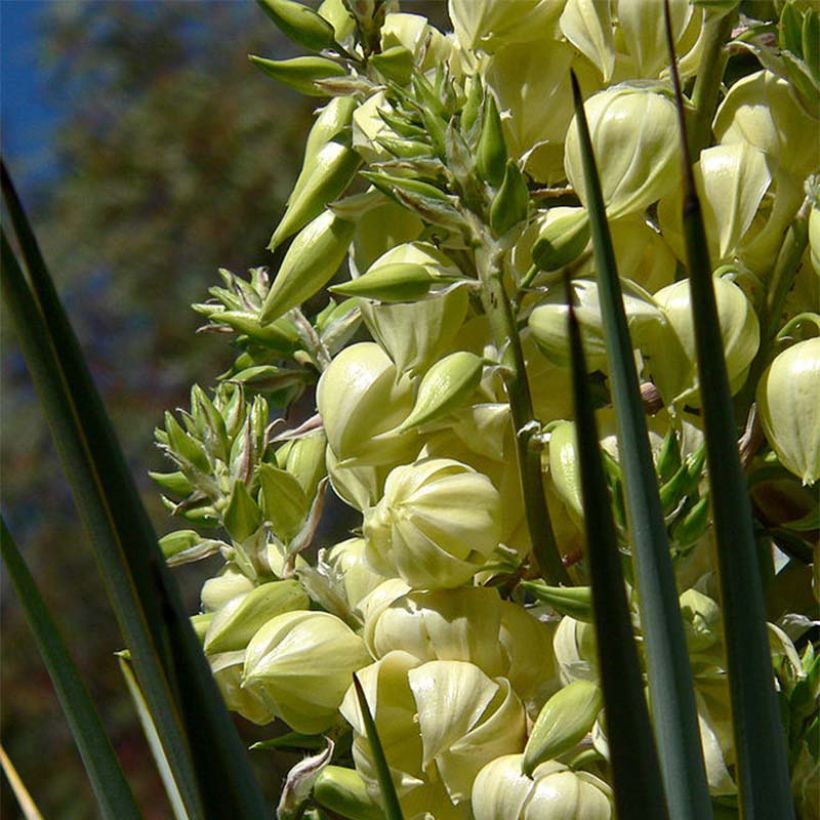

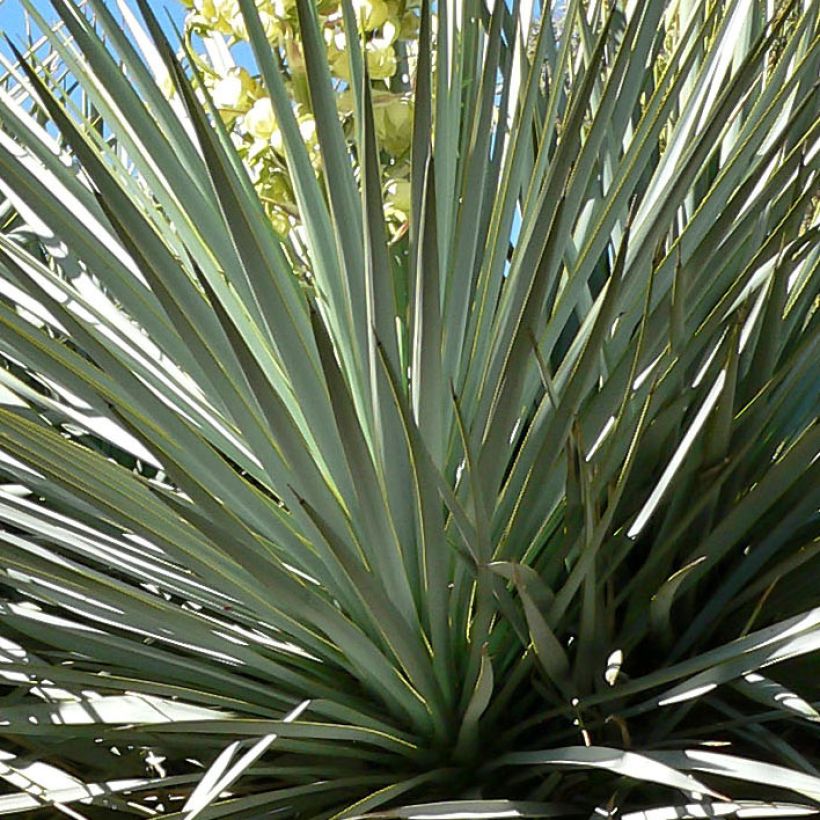

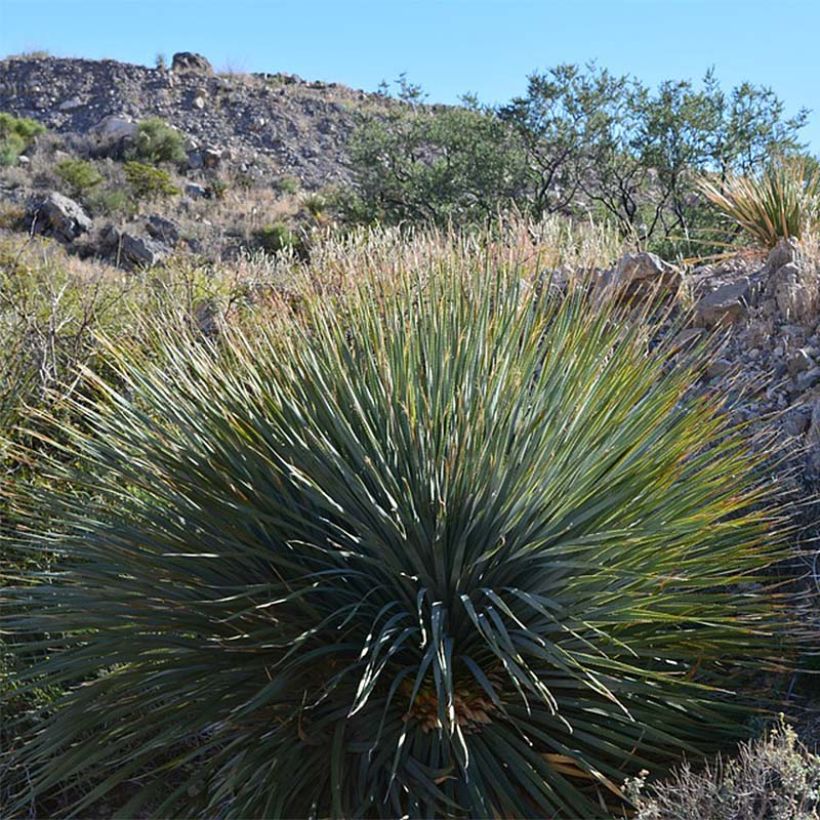

Plant habit
Flowering
Foliage
Botanical data
Yucca
rigida
Agavaceae (Asparagaceae)
Mexican Blue Yucca, Blue Yucca
North America
Other Yucca
Planting and care
Plant Yucca rigida in spring, in a very sunny and sheltered location if your garden is in a borderline hardiness zone. An adult specimen can withstand brief frosts of around -14 °C (6.8 °F). Its growth is quite slow, and will be accelerated by fertile soil and generous but spaced-out watering in summer. In mild climates, it is preferable to plant in autumn, especially in hot and dry climates in summer. This species dreads heavy and clayey soils and humidity, especially when combined with cold weather: plant it in well-drained soil, ideally in a large rock garden, a raised bed with gravel-enriched soil, or a rocky slope. However, it is not picky about soil pH, which can be slightly acidic, sandy, stony, or even slightly calcareous. It tolerates poor soil, but its growth will be slightly faster in soil that is somewhat fertile. Monitor watering during the first 2 years, especially in hot and dry periods. Remove faded stems.
If your Yucca looks beautiful but is not flowering, it is probably too young or has been in your garden for only 3 or 4 years. Indeed, it seems that this plant takes time to establish itself and only blooms after 8 years. After that, depending on sunlight and climate, it will flower every year, or every 2 or 3 years.
Propagation:
Yucca rigida can be easily propagated by stem cuttings. It should be noted that plants propagated from cuttings produce fewer roots than those from seeds, making them vulnerable to strong winds and less resistant to drought in hot climates.
Pollination in yuccas:
In their countries of origin, Yucca flowers are pollinated solely by a few species of tiny, primitive butterflies without proboscises that live in symbiosis with the plant, such as Prodoxus. The female of these butterflies carries pollen grains from one flower to the pistil of another. She lays a few eggs at the base of the flower. The young caterpillars feed on some of the seeds. Since Prodoxus is not part of our native fauna, most yuccas grown in our gardens never produce fruits. Only Yucca aloifolia is capable of doing so because its pollination does not depend on the presence of these micromoths.
Planting period
Intended location
Care
-
, onOrder confirmed
Reply from on Promesse de fleurs
Evergreen shrubs
Haven't found what you were looking for?
Hardiness is the lowest winter temperature a plant can endure without suffering serious damage or even dying. However, hardiness is affected by location (a sheltered area, such as a patio), protection (winter cover) and soil type (hardiness is improved by well-drained soil).

Photo Sharing Terms & Conditions
In order to encourage gardeners to interact and share their experiences, Promesse de fleurs offers various media enabling content to be uploaded onto its Site - in particular via the ‘Photo sharing’ module.
The User agrees to refrain from:
- Posting any content that is illegal, prejudicial, insulting, racist, inciteful to hatred, revisionist, contrary to public decency, that infringes on privacy or on the privacy rights of third parties, in particular the publicity rights of persons and goods, intellectual property rights, or the right to privacy.
- Submitting content on behalf of a third party;
- Impersonate the identity of a third party and/or publish any personal information about a third party;
In general, the User undertakes to refrain from any unethical behaviour.
All Content (in particular text, comments, files, images, photos, videos, creative works, etc.), which may be subject to property or intellectual property rights, image or other private rights, shall remain the property of the User, subject to the limited rights granted by the terms of the licence granted by Promesse de fleurs as stated below. Users are at liberty to publish or not to publish such Content on the Site, notably via the ‘Photo Sharing’ facility, and accept that this Content shall be made public and freely accessible, notably on the Internet.
Users further acknowledge, undertake to have ,and guarantee that they hold all necessary rights and permissions to publish such material on the Site, in particular with regard to the legislation in force pertaining to any privacy, property, intellectual property, image, or contractual rights, or rights of any other nature. By publishing such Content on the Site, Users acknowledge accepting full liability as publishers of the Content within the meaning of the law, and grant Promesse de fleurs, free of charge, an inclusive, worldwide licence for the said Content for the entire duration of its publication, including all reproduction, representation, up/downloading, displaying, performing, transmission, and storage rights.
Users also grant permission for their name to be linked to the Content and accept that this link may not always be made available.
By engaging in posting material, Users consent to their Content becoming automatically accessible on the Internet, in particular on other sites and/or blogs and/or web pages of the Promesse de fleurs site, including in particular social pages and the Promesse de fleurs catalogue.
Users may secure the removal of entrusted content free of charge by issuing a simple request via our contact form.
The flowering period indicated on our website applies to countries and regions located in USDA zone 8 (France, the United Kingdom, Ireland, the Netherlands, etc.)
It will vary according to where you live:
- In zones 9 to 10 (Italy, Spain, Greece, etc.), flowering will occur about 2 to 4 weeks earlier.
- In zones 6 to 7 (Germany, Poland, Slovenia, and lower mountainous regions), flowering will be delayed by 2 to 3 weeks.
- In zone 5 (Central Europe, Scandinavia), blooming will be delayed by 3 to 5 weeks.
In temperate climates, pruning of spring-flowering shrubs (forsythia, spireas, etc.) should be done just after flowering.
Pruning of summer-flowering shrubs (Indian Lilac, Perovskia, etc.) can be done in winter or spring.
In cold regions as well as with frost-sensitive plants, avoid pruning too early when severe frosts may still occur.
The planting period indicated on our website applies to countries and regions located in USDA zone 8 (France, United Kingdom, Ireland, Netherlands).
It will vary according to where you live:
- In Mediterranean zones (Marseille, Madrid, Milan, etc.), autumn and winter are the best planting periods.
- In continental zones (Strasbourg, Munich, Vienna, etc.), delay planting by 2 to 3 weeks in spring and bring it forward by 2 to 4 weeks in autumn.
- In mountainous regions (the Alps, Pyrenees, Carpathians, etc.), it is best to plant in late spring (May-June) or late summer (August-September).
The harvesting period indicated on our website applies to countries and regions in USDA zone 8 (France, England, Ireland, the Netherlands).
In colder areas (Scandinavia, Poland, Austria...) fruit and vegetable harvests are likely to be delayed by 3-4 weeks.
In warmer areas (Italy, Spain, Greece, etc.), harvesting will probably take place earlier, depending on weather conditions.
The sowing periods indicated on our website apply to countries and regions within USDA Zone 8 (France, UK, Ireland, Netherlands).
In colder areas (Scandinavia, Poland, Austria...), delay any outdoor sowing by 3-4 weeks, or sow under glass.
In warmer climes (Italy, Spain, Greece, etc.), bring outdoor sowing forward by a few weeks.

































